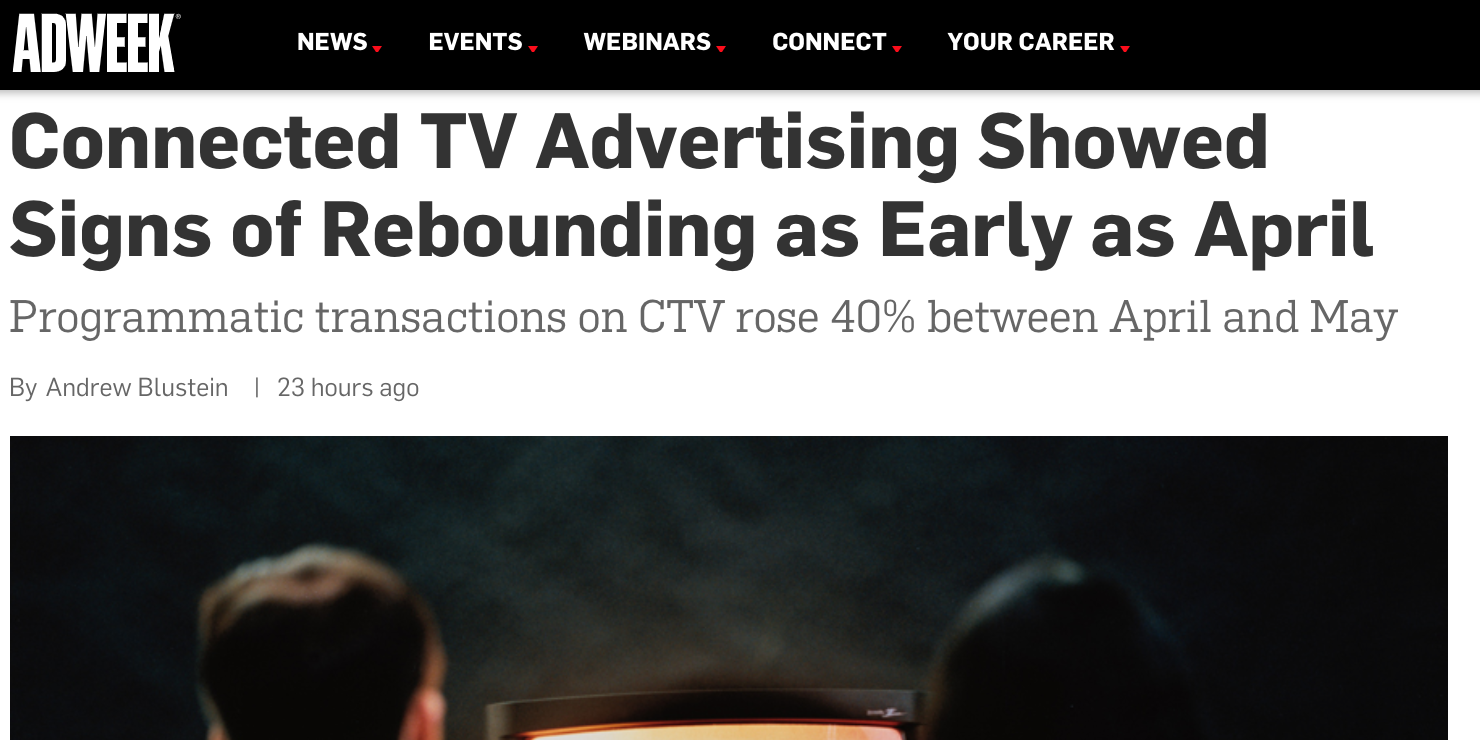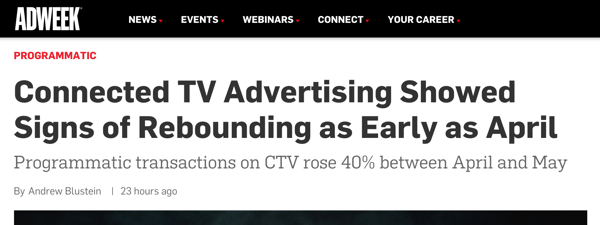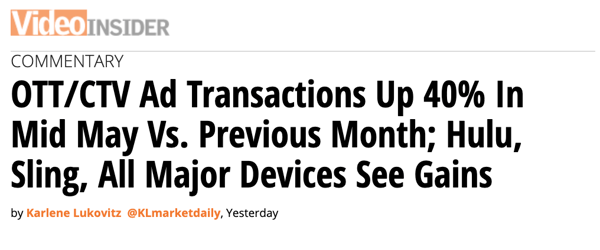

'CTV ... gives advertisers the opportunity to come back in'
All major OTT/CTV device types saw an increase in ad transactions in this time, with Vizio devices (+108%) leading the pack. Adweek interviewed Vizio's Mike O'Donnell, SVP of Platform Business, on the latest findings:

In its coverage, MediaPost highlighted some of the major Roku apps that saw gains in the time period studied:
"Hulu (+44%) and Sling TV (+30%), the two biggest Roku store apps by programmatic ad spend, saw significant gains, as did The CW (+129%), Fox News Channel (+103%) and ABC (+31%), among others," wrote MediaPost. "In addition, apps in the 'kids and family' category on Roku saw a 128% increase in programmatic ad spend."
"Brands may have paused or pulled back advertising overall, but many are still pushing forward on connected TV," wrote AdExchanger in its review of Pixalate's findings. "As advertisers hesitate on their upfront commitments, CTV could be a more flexible alternative."
See the full report
Pixalate's Programmatic Ad Spend in the Age of COVID-19: Connected TV/OTT Advertising Report — Version 2.0 includes:
Download a free copy of the Programmatic Ad Spend in the Age of COVID-19: Connected TV/OTT Report — Version 2.0 today.
*By entering your email address and clicking Subscribe, you are agreeing to our Terms of Use and Privacy Policy.
These Stories on Thought Leadership
*By entering your email address and clicking Subscribe, you are agreeing to our Terms of Use and Privacy Policy.

Disclaimer: The content of this page reflects Pixalate’s opinions with respect to the factors that Pixalate believes can be useful to the digital media industry. Any proprietary data shared is grounded in Pixalate’s proprietary technology and analytics, which Pixalate is continuously evaluating and updating. Any references to outside sources should not be construed as endorsements. Pixalate’s opinions are just that - opinion, not facts or guarantees.
Per the MRC, “'Fraud' is not intended to represent fraud as defined in various laws, statutes and ordinances or as conventionally used in U.S. Court or other legal proceedings, but rather a custom definition strictly for advertising measurement purposes. Also per the MRC, “‘Invalid Traffic’ is defined generally as traffic that does not meet certain ad serving quality or completeness criteria, or otherwise does not represent legitimate ad traffic that should be included in measurement counts. Among the reasons why ad traffic may be deemed invalid is it is a result of non-human traffic (spiders, bots, etc.), or activity designed to produce fraudulent traffic.”

